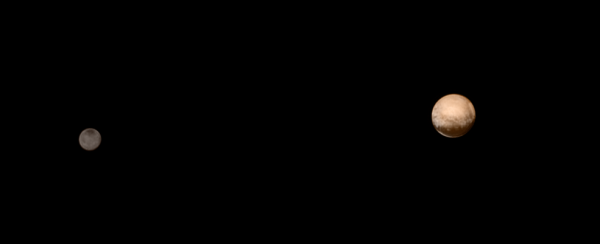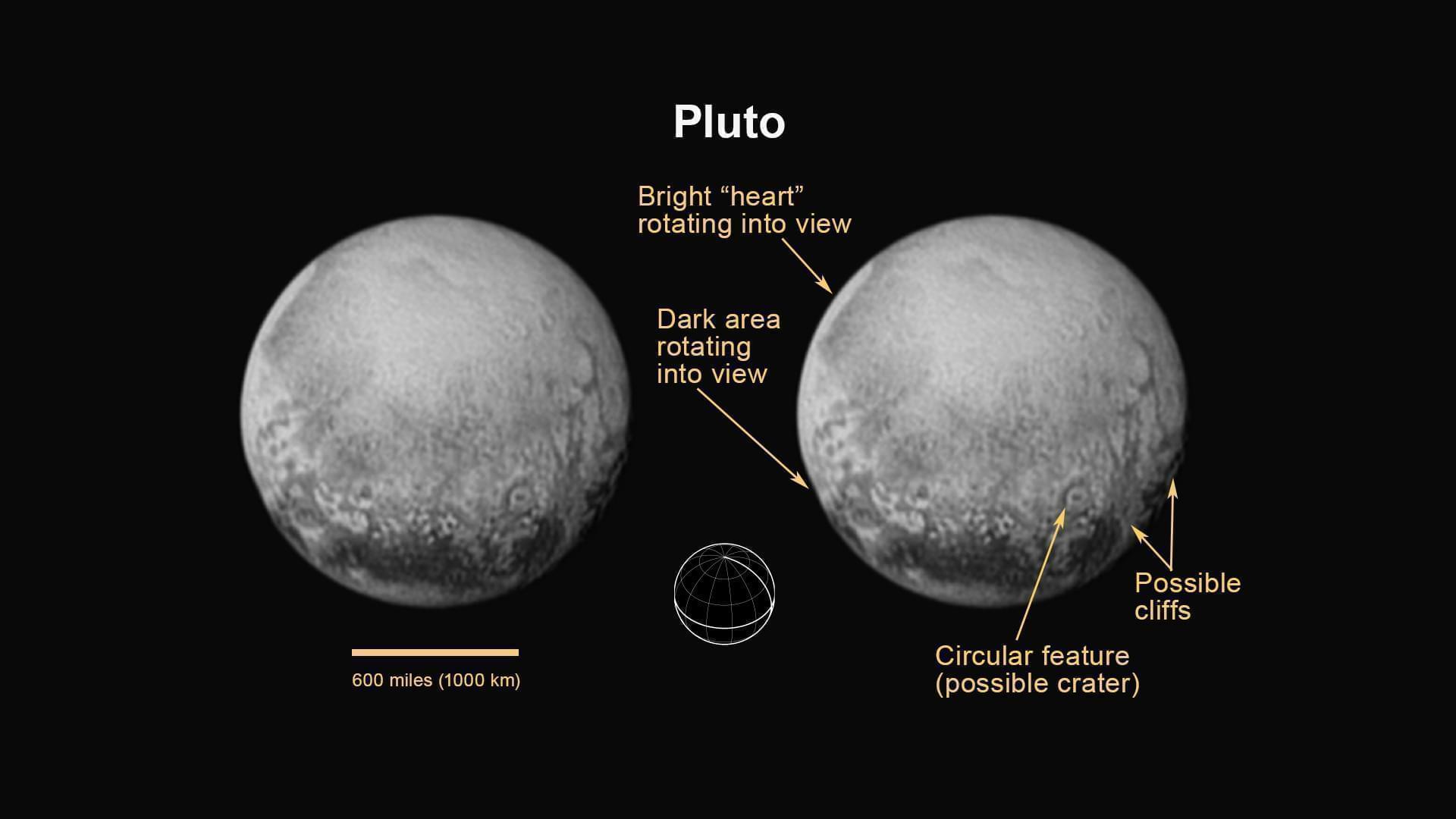Pluto Fly-By: Reaching New Horizons

New Horizons was about 3.7 million miles (6 million kilometers) from Pluto and Charon when it snapped this portrait late on July 8, 2015. Color information obtained earlier in the mission from the Ralph instrument has been added. NASA-JHUAPL-SWRI
On Tuesday, July 14th just before 7:00 a.m. central time, the New Horizons space probe will fly by Pluto.
“It’s going to take a couple hours to go through the Pluto system, then turn its antenna back toward earth and ‘phone home’” said David Leake, the head of Parkland College's Staerkel Planetarium. Given the time required for the images to reach Earth, about 5 hours, NASA will begin receiving information from the craft at about 8:00 p.m. he says.

On July 11, 2015, New Horizons captured a world that is growing more fascinating by the day. For the first time on Pluto, this view reveals linear features that may be cliffs, as well as a circular feature that could be an impact crater. Rotating into view is the bright heart-shaped feature that will be seen in more detail during New Horizons’ closest approach on July 14. The annotated version includes a diagram indicating Pluto’s north pole, equator, and central meridian.
This fly-by has been a long time in the making. NASA was granted approval for the mission back in 2001, but the New Horizons craft wasn’t able to take flight until January 19, 2006 – shortly before Pluto was demoted to dwarf planet status.This event comes eighty-five years after Pluto was discovered by an astronomer from Illinois named Clyde Tombaugh. Tombaugh, originally from Streator, Illinois, was a young researcher at the Lowell Observatory when he discovered Pluto.
The mission is about more than Pluto he says. “This is really a different area of the solar system and that’s sort of the main thing,” said Leake. “That’s why the mission is called New Horizons – there’s this whole different area.”
You can find more on the Parkland Staerkel Planetarium’s events here.
The planetarium will project the Pluto news conference live on the dome in addition to activities in the lobby. The event is free and runs from 6:00 - 8:30 p.m. They will include any new images of Pluto and its moons from the New Horizons spacecraft in both "Prairie Skies" and their New Horizons show beginning on July 17.
